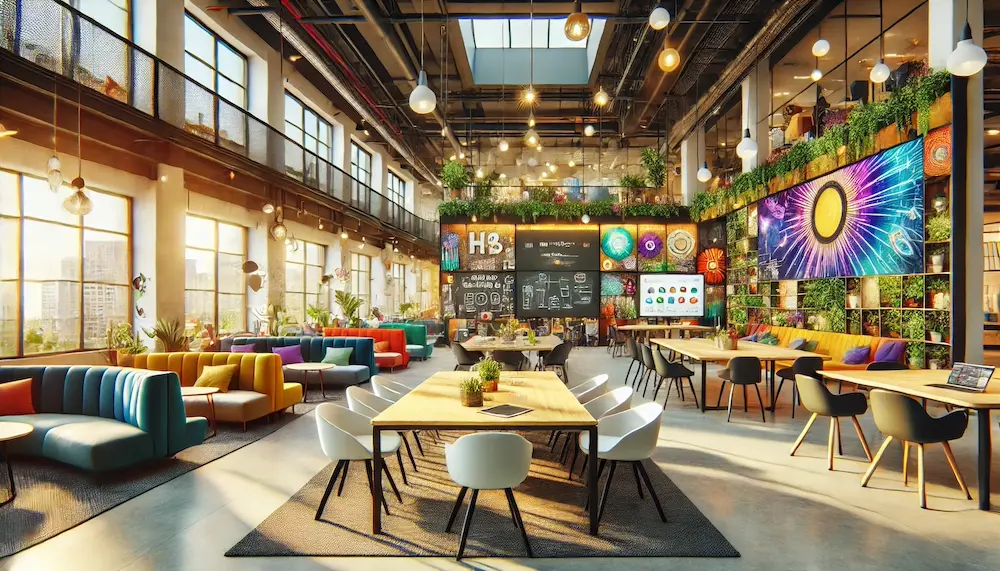A collaborative hub office is a workspace designed to foster teamwork, innovation, and communication by providing environments that encourage employee interaction.
History and Origins of Collaborative Hub Offices
The concept of collaborative workspaces gained prominence in the late 20th and early 21st centuries, influenced by the rise of the tech industry and startups that prioritized open communication and teamwork. Companies like Pixar and Google were pioneers in designing offices that encouraged spontaneous interactions, believing that such encounters could lead to increased creativity and problem-solving.
Key Features of Collaborative Hub Offices
- Open-Plan Layouts: Spaces without physical barriers to facilitate easy communication and movement.
- Flexible Furniture: Modular and movable furniture that can be reconfigured to suit different team sizes and activities.
- Technology Integration: Advanced tools and platforms that support seamless collaboration, both in-person and remotely.
- Designated Collaboration Zones: Areas specifically designed for group work, brainstorming, and meetings.
- Informal Meeting Spaces: Casual areas like lounges or coffee bars where employees can have spontaneous discussions.
Applications of Collaborative Hub Office Design
- Innovation Labs: Spaces dedicated to developing new ideas and products, benefiting from collaborative environments.
- Co-working Spaces: Shared offices that host professionals from various fields, encouraging networking and collaboration.
- Corporate Offices: Companies adopting collaborative designs to break down silos and enhance team cohesion.
Considerations When Designing a Collaborative Hub Office
- Balancing Collaboration and Privacy: While promoting teamwork, it’s essential to provide quiet areas for focused, individual work.
- Acoustic Management: Open spaces can become noisy; incorporating sound-absorbing materials can help maintain a comfortable noise level.
- Employee Input: Involving staff in the design process can ensure the space meets their needs and preferences.
- Scalability: Designing flexible spaces that can adapt to organizational growth and changing team dynamics.
Conclusion
Collaborative hub offices are designed to enhance teamwork and innovation by creating environments that encourage interaction among employees. By thoughtfully incorporating key features and considering factors like privacy and acoustics, organizations can create spaces that support both collaboration and individual productivity.
